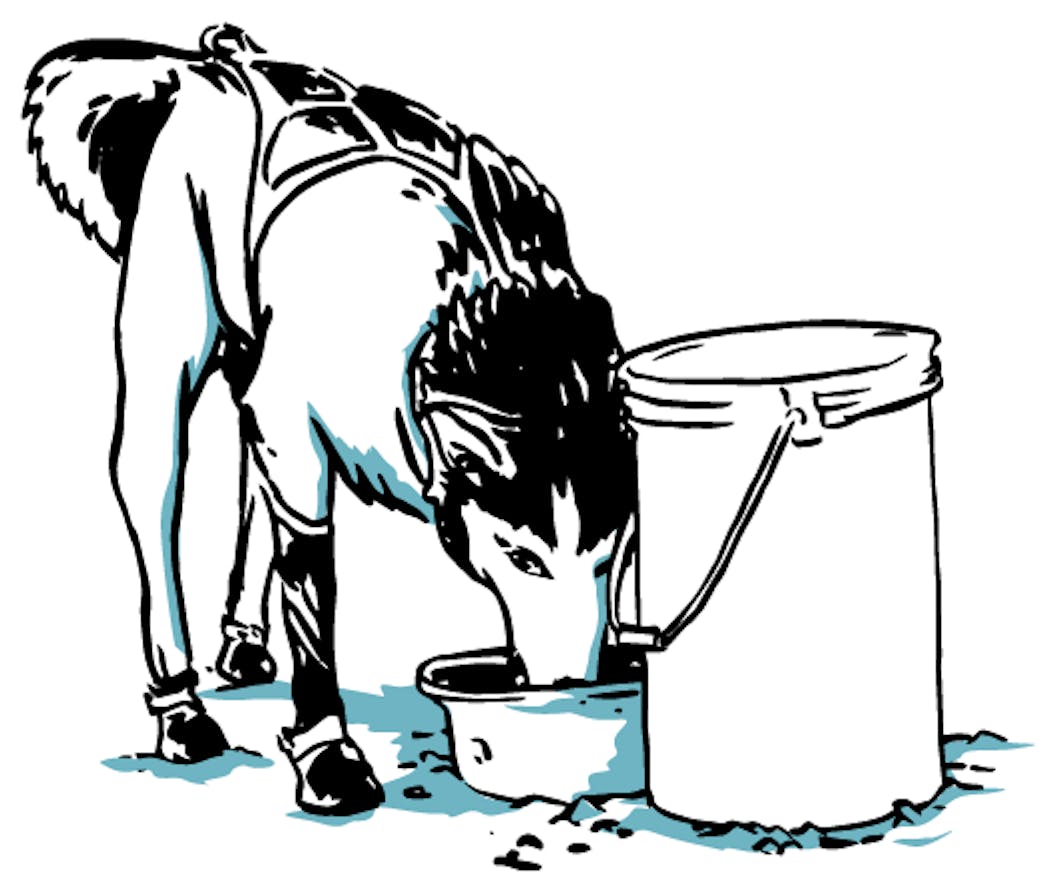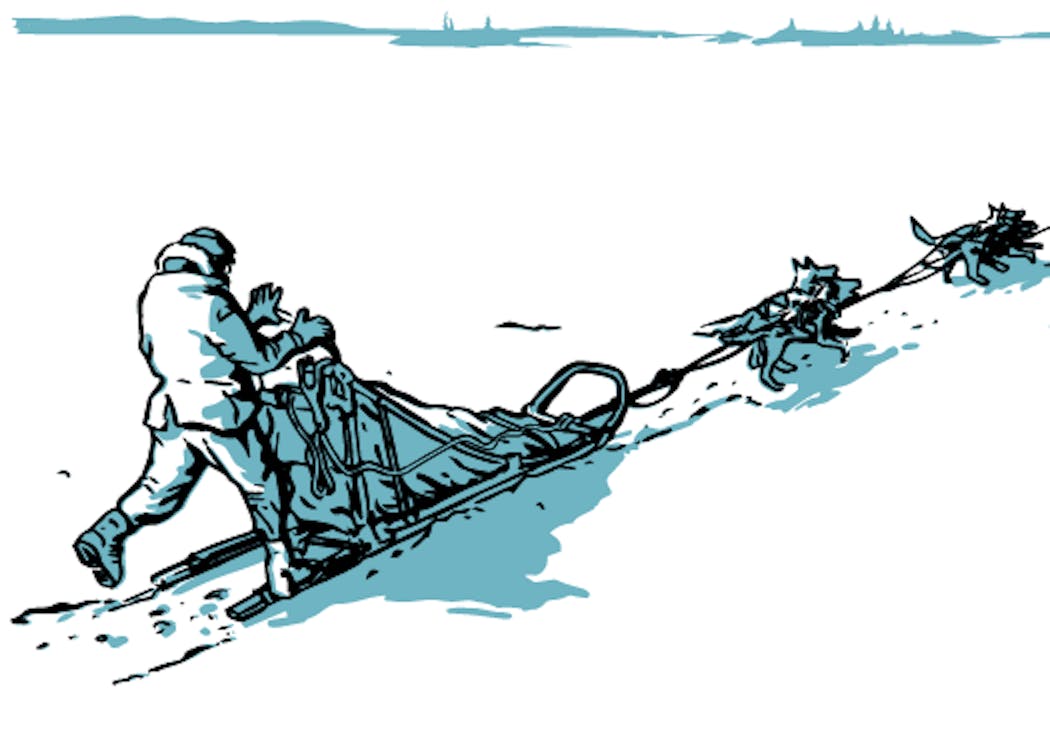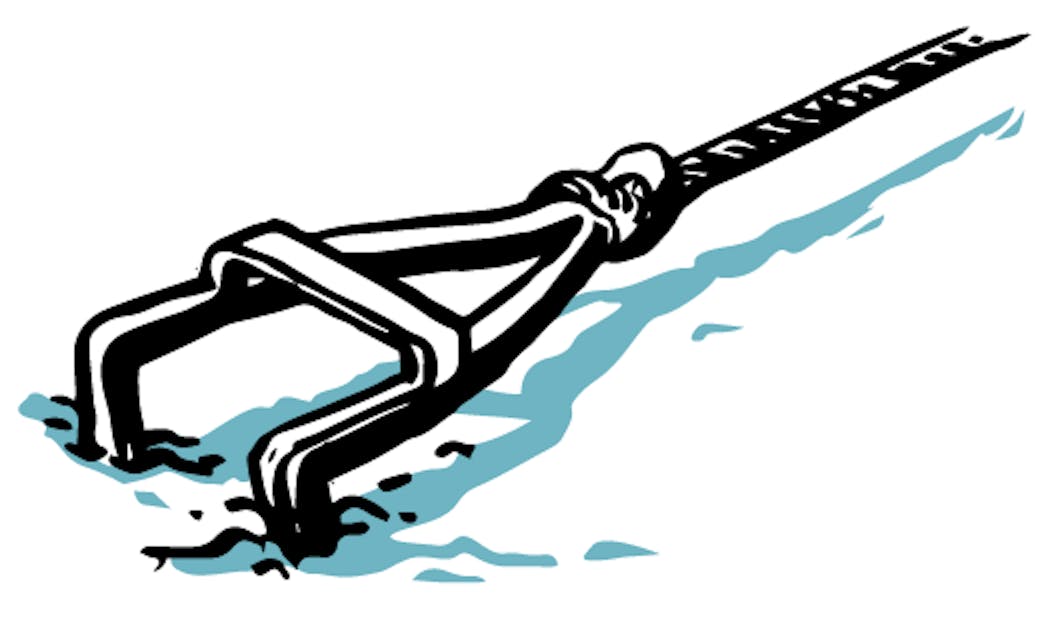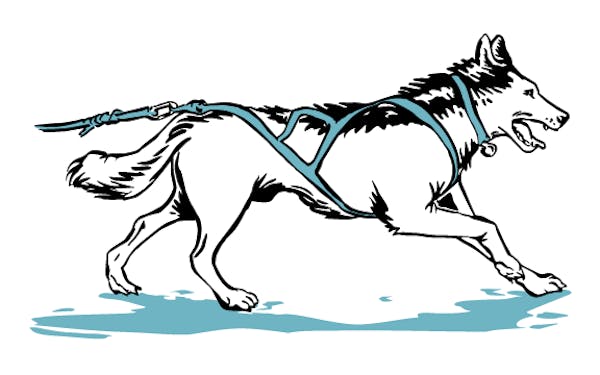Feeding the machines
Feeding dogs throughout a race is an art, said Freking. Sometimes they get fussy as the race progresses and gravitate toward food preferences. For the Beargrease Sled Dog Marathon, each dog might burn 10,000-12,000 calories per day. Their diet consists of beef, chicken, kibble and different fats. Depending on circumstances, the ingredients are frozen, thawed or served as a meaty soup for hydration. Figuring that out for every dog can be tricky.
Outside temperatures and lengths of rest also factor into what and how much the dogs are fed. Anderson tries to feed his dogs about one pound of beef and beef fat, plus a cup of kibble, per checkpoint. However, during rest breaks of five hours or more, he'll divide a meal and a half into separate servings. He likes to keep them topped off, but not too close to the team's checkpoint departure. Warming food helps the dogs digest easier.
Basket and sled bag
Race regulations require mushers to carry mandatory gear for safety reasons. Many items are stored in the sled bag that rides within the sled basket. Typical gear for most races includes:
• Two working headlamps with a beam capable of reaching the lead dog
• Dog harnesses padded around the neck and chest
• Reflective tape for all dog harnesses and the rear of the sled stanchions
• Veterinary book
• First aid kit
• Fire starter
• One day's food ration for every dog and the musher
• At least one set of dog booties per dog
• Snowshoes
• Working brake
• Knife and hand ax
• Sleeping bag
• Cable cutter for the gang line
• Emergency flares
Harnessing
The gangline is the main cable that extends down the middle of the team from the front of the sled to the back of the lead dog's harness. Each dog is connected to the gang line with the tugline that comes off the back of its harness. In addition, a neckline stretches from a dog's collar to the gangline.
Lead dogs are usually in pairs at the front of the gangline. However, some teams will run with a single lead.
Point dogs are positioned directly behind the leaders. The dogs closest to the sled are the wheel dogs. Everyone between the wheel dogs and point dogs are team or swing dogs. Mushers will sometimes swap dogs into different positions as the race progresses. But no new dogs may be substituted onto the team once they are on the race trail.
Snow hook
The power of a 12-dog team is such that several human handlers are needed to bring the dogs and sled to the start line. A snow hook is tethered to the sled and used to keep dog teams in place whenever they're stopped. In the starting chute, mushers will stomp the snow hook into the snow or affix it to an immovable object. When the countdown clock reaches zero and a team starts, a member of the start crew called the "hooker" disengages the snow hook and hands it to the musher. However, with 12 dogs bolting forward, the handoff is sometimes fumbled. The snow hook might bounce along the ground, requiring the musher to pull it onboard while the team is on the run.
Distraction
Checkpoints along a race trail are full of activity, noise and distractions that dog teams don't normally experience in everyday life. To help prepare dogs for checkpoint hubbub, mushers sometimes introduce snowmobiles and other disquieting elements during training runs that simulate checkpoint scenarios. The more relaxed dogs are at a checkpoint, the better able they are to rest, eat and eventually return to the trail.

Twins lose second in a row to Blue Jays as bullpen falters late
What is the 'House settlement,' and what does it mean for the Gophers and NCAA?
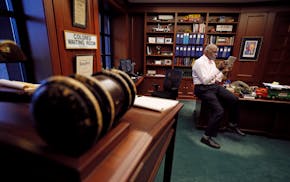
Souhan: Anxiety and depression in the NFL helped inspire Lindsey Young's children's book
Neal: Trade season is here ... and now it's time for the Twins to act

